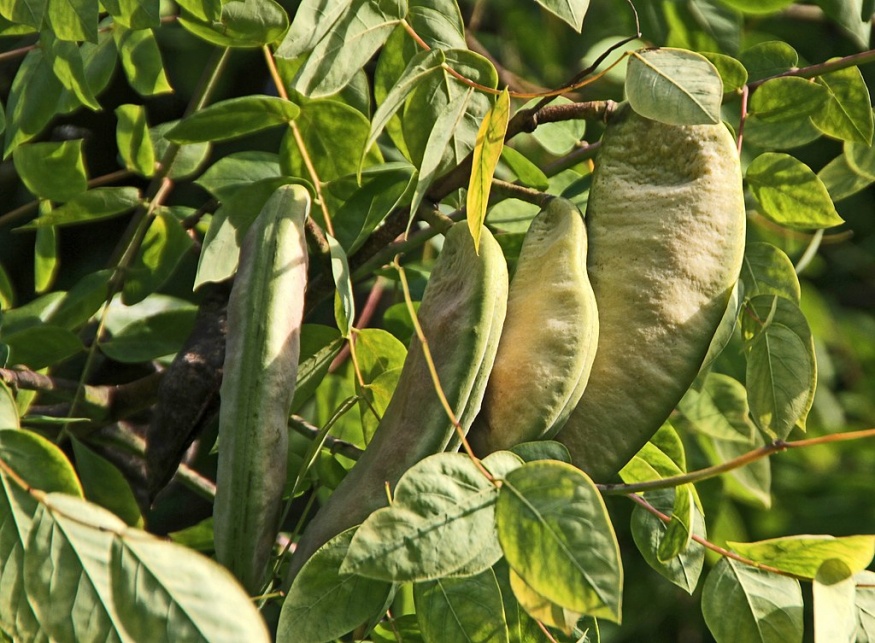Kentucky Coffeetree
Family: Fabaceae Native to: Eastern North America
Hardy to zone: 3
Natural habitat: waters edge, floodplains, forest edge
Shapes: irregular, oblong
Height: 60-75ft
width: 40-50ft
Growth rate: medium
Unique attractions: fall colour, flowers, fruit, winter interest
Tolerances: air pollution, pest & desease
Common uses: landscaping, cityscape, specimen, rain garden
Light: full sun
Transplanting: easy
Soil: moist and fertile, well drained, tolerates wet feet, drought tolerant, ph adaptable, dry, wet, sandy
Reproduction type: dioecious
Kentucky coffeetree is a medium sized tree native to central United States and found only in a few locations in south western Ontario, Canada. It grows in floodplains, forest openings, and by water, often suckering to form colonies in the wild. The shape is Irregular to oval or with a wide crown. Its adaptable to a variety of soil conditions including rocky or poor soil, but grows best in rich moist soil and full sun. Drought and pollution tolerance with easy transplanting make it an ideal street or urban landscape tree.

Very long doubly compound leaves, up to 36 inches long and 24 inches in width make them the largest leaves of any native Canadian tree. Kentucky coffeetree is also noted to be one of the last to leaf out in the spring, and one of the first to drop leaves in the fall, hence it's botanical name meaning 'naked branch'. The Stems are thick, and twig piths are wide and pink to brown in colour. Bark on semi-mature branches are rough, flaky and scaly. From May to early June, pyramidal clusters of fragrant greenish white flowers appear. Large, dark, bean-like seed pods follow flowering, containing 5 to 7 seeds which persist into winter.

The name coffeetree was given by early settlers who would make a crude coffee substitute from them. However, the seeds are considered inedible (toxic) to humans, wildlife, and cattle. For this reason, roasting the seeds first is very important. As a dioecious tree (either male or female) reproduction can't occur without a male and female tree within close proximity. This along with the destruction of habitat and waterways (for seed dispersal), have made Kentucky coffeetree a species at risk in Ontario.
References
Arborday Founation. (n.d.). Kentucky coffeetree. Retrieved from https://www.arborday.org/trees/treeguide/TreeDetail.cfm?ItemID=819
Farrar, J.L. (2018). Trees in Canada. Ottawa, ON: Natural Resources Canada.
Ontario. (2019). Kentucky coffee-tree (Species at Risk). Retrieved from https://www.ontario.ca/page/kentucky-coffee-tree-species-risk
Oregon State University. (n.d.). Gymnocladus dioica. Retrieved from https://landscapeplants.oregonstate.edu/plants/gymnocladus-dioica